Abstract
We have used a continuous intravenous infusion of glucose (6 mg/kg/min), insulin (80 mU/min), epinephrine (6 mug/min), and propranolol (0.08 mg/min) to directly assess insulin resistance in 14 untreated adult onset diabetics with a mean (plus or minus SE) fasting plasma glucose level of 217 plus or minus 17 mg/100 ml. During the infusion endogenous insulin secretion is inhibited and steady-state plasma glucose and insulin levels are achieved after 90 min. Since similar steady-state levels of plasma insulin are achieved in all subjects, the plasma glucose concentration observed during the steady-state period is a measure of an individual's insulin resistance. Under these conditions, the mean (plus or minus SE) steady-state plasma glucose level of the 14 diabetic patients was 350 plus or minus 16 mg/100 ml, while that of 12 normal subjects was 121 plus or minus 4 mg/100 ml. Additional studies were performed in which control subjects and patients with diabetes had their fasting plasma glucose levels acutely raised or lowered to comparable levels before receiving the basic infusion mixture of glucose, insulin, epinephrine, and propranolol. The results of these studies indicated that differences in initial plasma glucose levels could not account for the different glucose responses of the two groups to the basic infusion. Finally, the mean (plus or minus SE) steady-state plasma glucose level of 104 plus or minus 17 mg/100 ml observed during the same basic infusion in five patients with fasting hyperglycemia (mean plus or minus SE, 142 plus or minus 12 mg/100 ml) secondary to chronic pancreatitis suggested that neither chronic hyperglycemia nor hypoinsulinemia per se necessarily lead to insulin resistance. These results demonstrate that marked insulin resistance exists in adult onset diabetics with fasting hyperglycemia. Since previous studies have documented the presence of insulin resistance in patients with chemical diabetes, the possibility exists that insulin resistance may be characteristic of adult onset diabetes mellitus.
Full text
PDF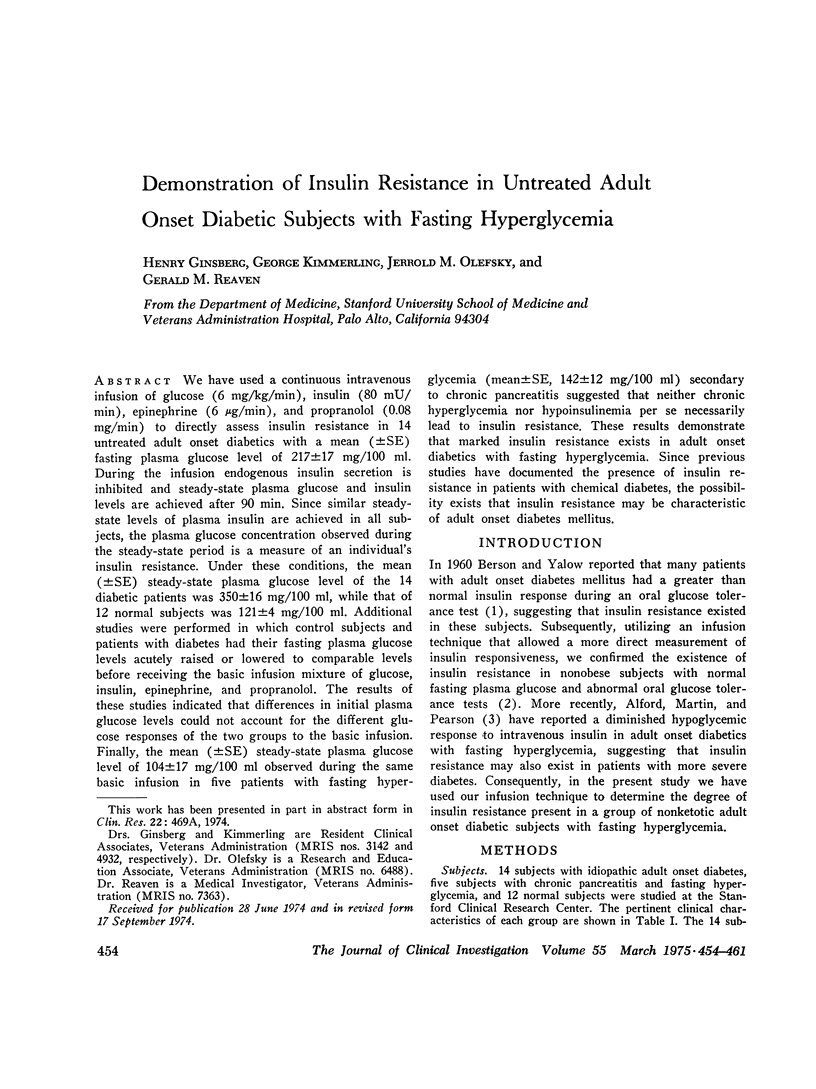
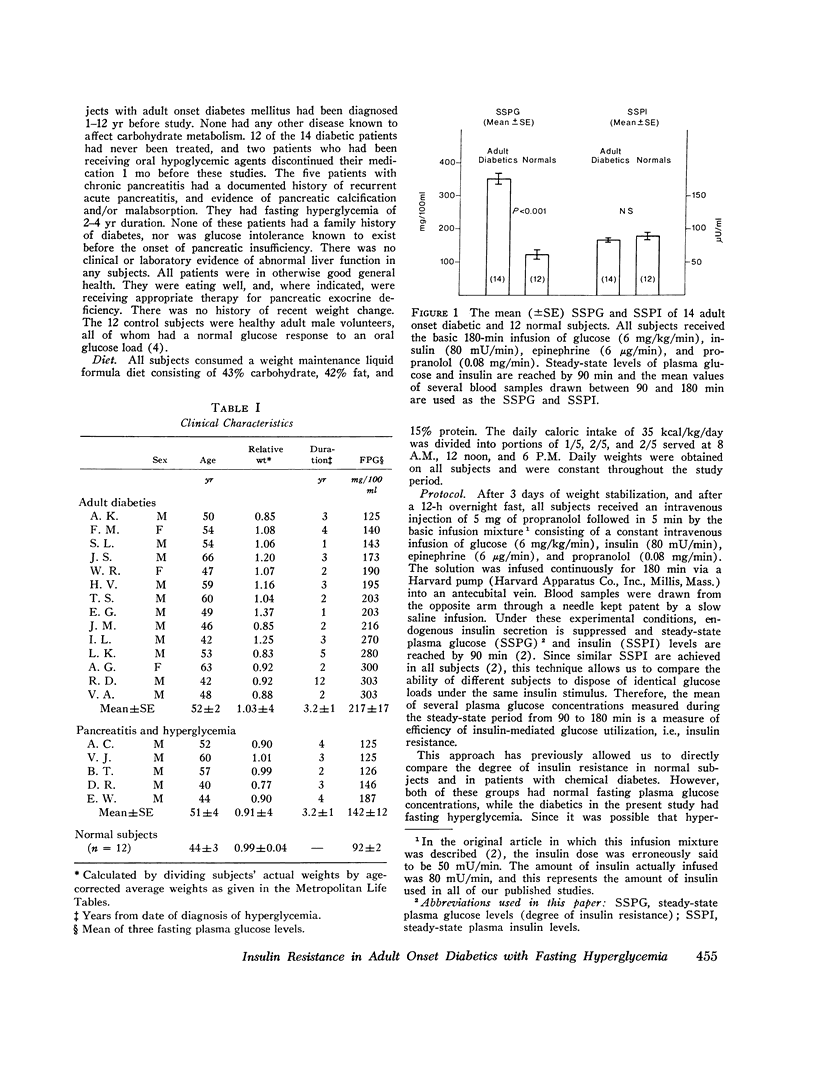
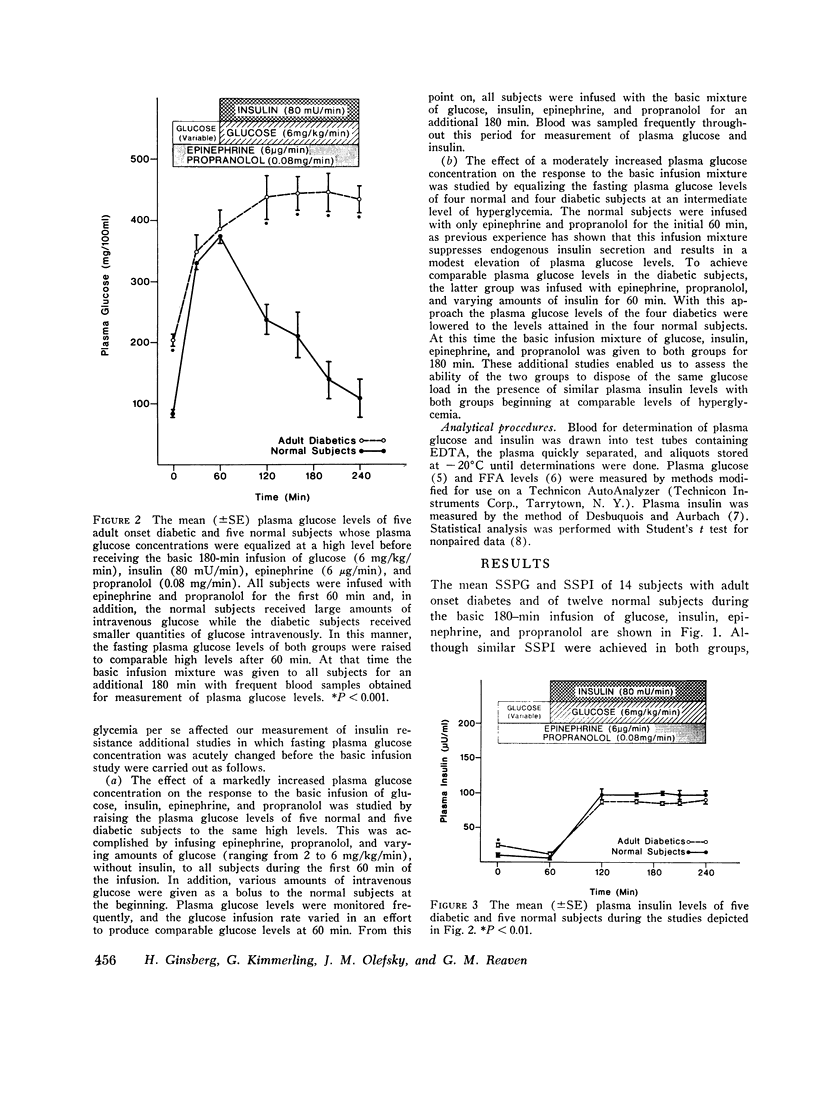
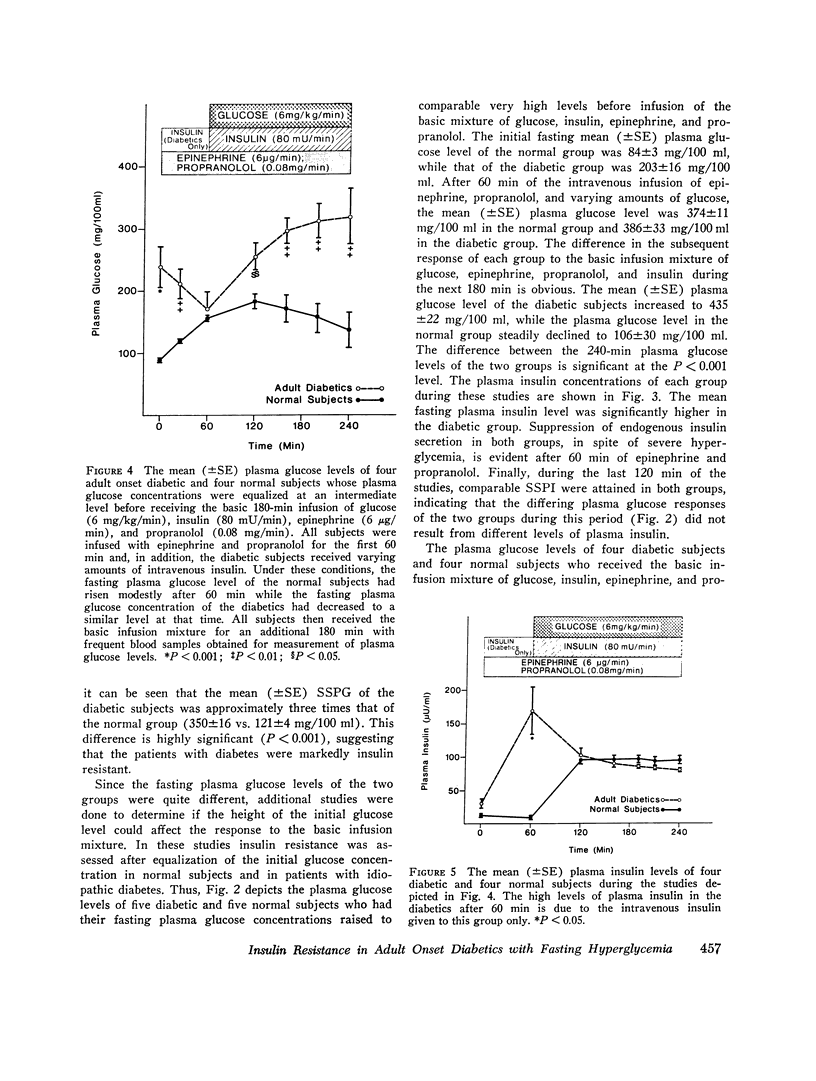
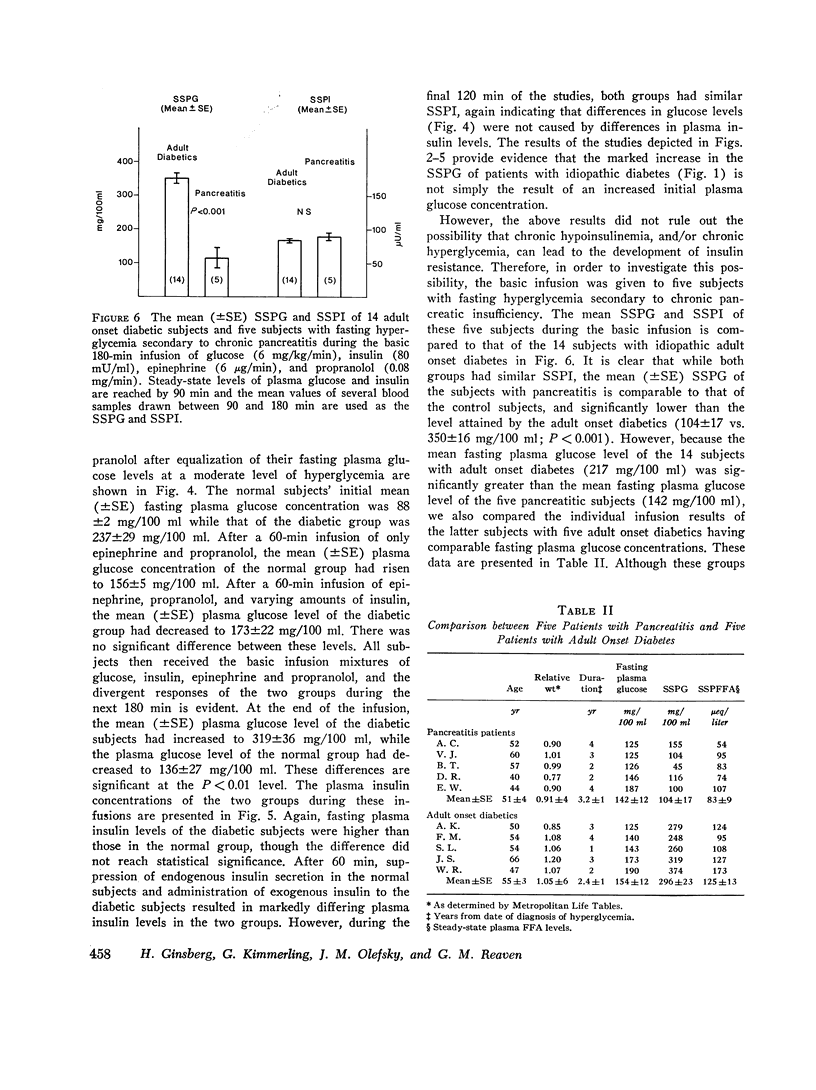
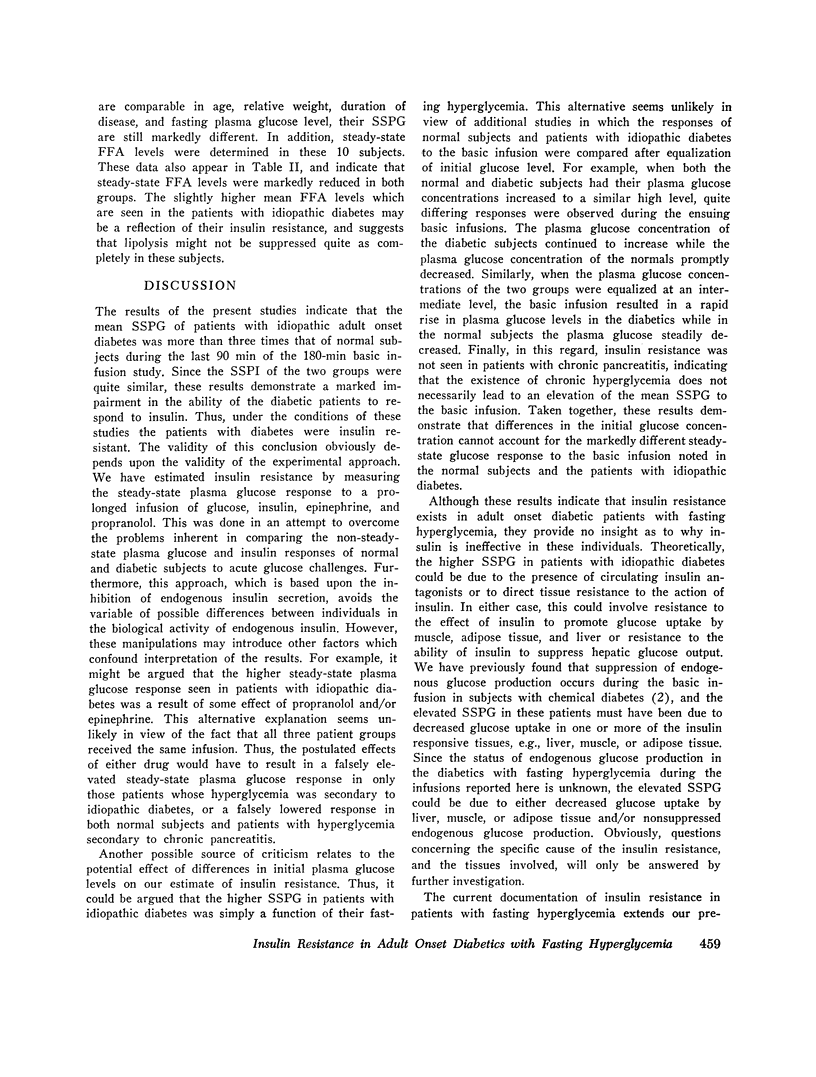
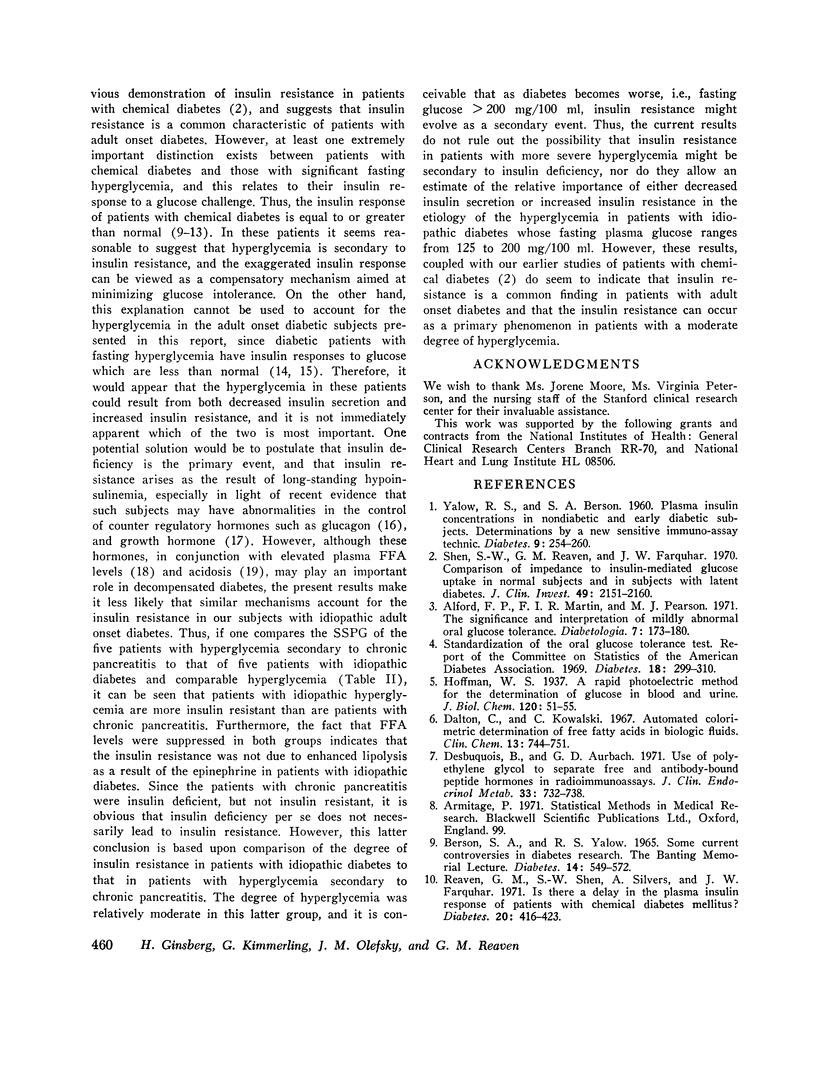
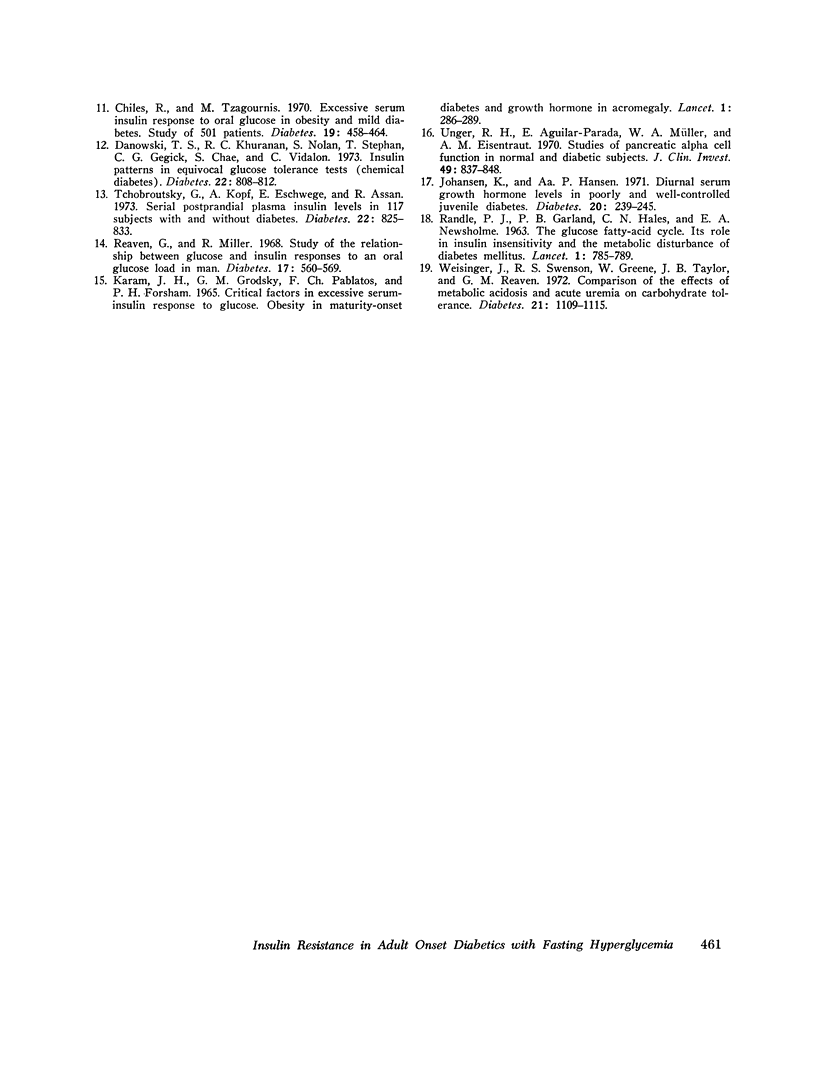
Images in this article
Selected References
These references are in PubMed. This may not be the complete list of references from this article.
- Alford F. P., Martin F. I., Pearson M. J. The significance and interpretation of mildly abnormal oral glucose tolerance. Diabetologia. 1971 Jun;7(3):173–180. doi: 10.1007/BF01212550. [DOI] [PubMed] [Google Scholar]
- Berson S. A., Yalow R. S. Some current controversies in diabetes research. Diabetes. 1965 Sep;14(9):549–572. doi: 10.2337/diab.14.9.549. [DOI] [PubMed] [Google Scholar]
- Chiles R., Tzagournis M. Excessive serum insulin response to oral glucose in obesity and mild diabetes. Study of 501 patients. Diabetes. 1970 Jun;19(6):458–464. doi: 10.2337/diab.19.6.458. [DOI] [PubMed] [Google Scholar]
- Dalton C., Kowalski C. Automated colorimetric determination of free fatty acids in biologic fluids. Clin Chem. 1967 Sep;13(9):744–751. [PubMed] [Google Scholar]
- Danowski T. S., Khurana R. C., Nolan S., Stephan T., Gegick C. G., Chae S., Vidalon C. Insulin patterns in equivocal glucose tolerance tests (chemical diabetes). Diabetes. 1973 Nov;22(11):808–812. doi: 10.2337/diab.22.11.808. [DOI] [PubMed] [Google Scholar]
- Desbuquois B., Aurbach G. D. Use of polyethylene glycol to separate free and antibody-bound peptide hormones in radioimmunoassays. J Clin Endocrinol Metab. 1971 Nov;33(5):732–738. doi: 10.1210/jcem-33-5-732. [DOI] [PubMed] [Google Scholar]
- Johansen K., Hansen A. P. Diurnal serum growth hormone levels in poorly and well-controlled juvenile diabetics. Diabetes. 1971 Apr;20(4):239–245. doi: 10.2337/diab.20.4.239. [DOI] [PubMed] [Google Scholar]
- KARAM J. H., GRODSKY G. M., PAVLATOS F. C., FORSHAM P. H. CRITICAL FACTORS IN EXCESSIVE SERUM-INSULIN RESPONSE TO GLUCOSE. OBESITY IN MATURITY-ONSET DIABETES AND GROWTH HORMONE IN ACROMEGALY. Lancet. 1965 Feb 6;1(7380):286–289. doi: 10.1016/s0140-6736(65)91026-3. [DOI] [PubMed] [Google Scholar]
- RANDLE P. J., GARLAND P. B., HALES C. N., NEWSHOLME E. A. The glucose fatty-acid cycle. Its role in insulin sensitivity and the metabolic disturbances of diabetes mellitus. Lancet. 1963 Apr 13;1(7285):785–789. doi: 10.1016/s0140-6736(63)91500-9. [DOI] [PubMed] [Google Scholar]
- Reaven G. M., Shen S. W., Silvers A., Farquhar J. W. Is there a delay in the plasma insulin response of patients with chemical diabetes mellitus? Diabetes. 1971 Jun;20(6):416–423. doi: 10.2337/diab.20.6.416. [DOI] [PubMed] [Google Scholar]
- Reaven G., Miller R. Study of the relationship between glucose and insulin responses to an oral glucose load in man. Diabetes. 1968 Sep;17(9):560–569. doi: 10.2337/diab.17.9.560. [DOI] [PubMed] [Google Scholar]
- Shen S. W., Reaven G. M., Farquhar J. W. Comparison of impedance to insulin-mediated glucose uptake in normal subjects and in subjects with latent diabetes. J Clin Invest. 1970 Dec;49(12):2151–2160. doi: 10.1172/JCI106433. [DOI] [PMC free article] [PubMed] [Google Scholar]
- Tchobroutsky G., Kopf A., Eschwege E., Assan R. Serial postprandial plasma insulin levels in 117 subjects with and without diabetes. Diabetes. 1973 Nov;22(11):825–833. doi: 10.2337/diab.22.11.825. [DOI] [PubMed] [Google Scholar]
- Unger R. H., Aguilar-Parada E., Müller W. A., Eisentraut A. M. Studies of pancreatic alpha cell function in normal and diabetic subjects. J Clin Invest. 1970 Apr;49(4):837–848. doi: 10.1172/JCI106297. [DOI] [PMC free article] [PubMed] [Google Scholar]
- Weisinger J., Swenson R. S., Greene W., Taylor J. B., Reaven G. M. Comparison of the effects of metabolic acidosis and acute uremia on carbohydrate tolerance. Diabetes. 1972 Nov;21(11):1109–1115. doi: 10.2337/diab.21.11.1109. [DOI] [PubMed] [Google Scholar]
- YALOW R. S., BERSON S. A. Plasma insulin concentrations in nondiabetic and early diabetic subjects. Determinations by a new sensitive immuno-assay technic. Diabetes. 1960 Jul-Aug;9:254–260. doi: 10.2337/diab.9.4.254. [DOI] [PubMed] [Google Scholar]






